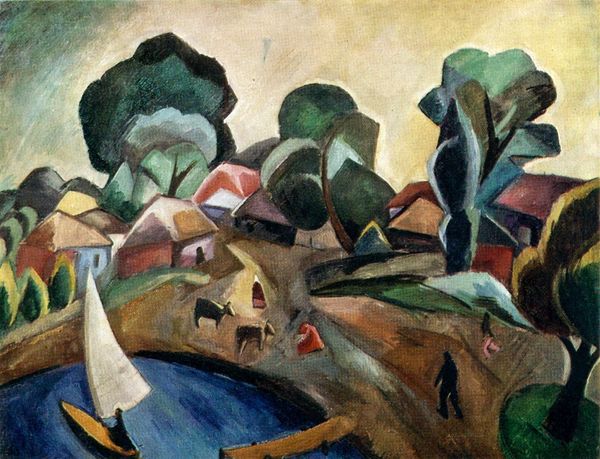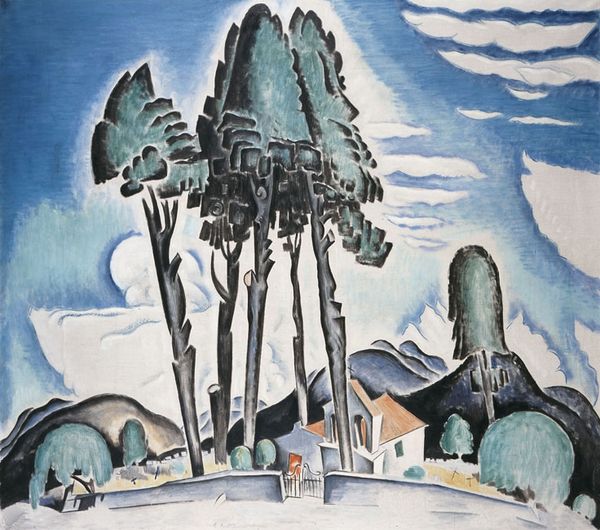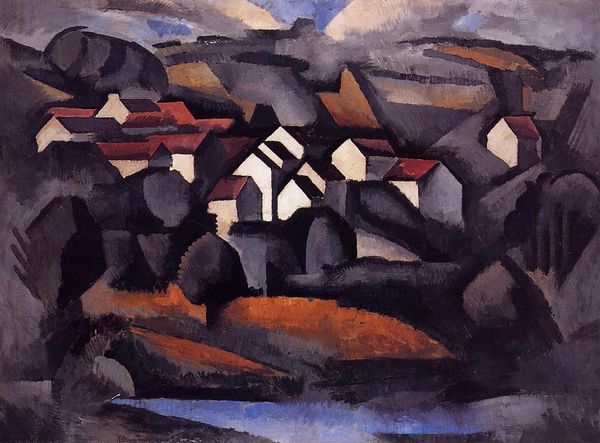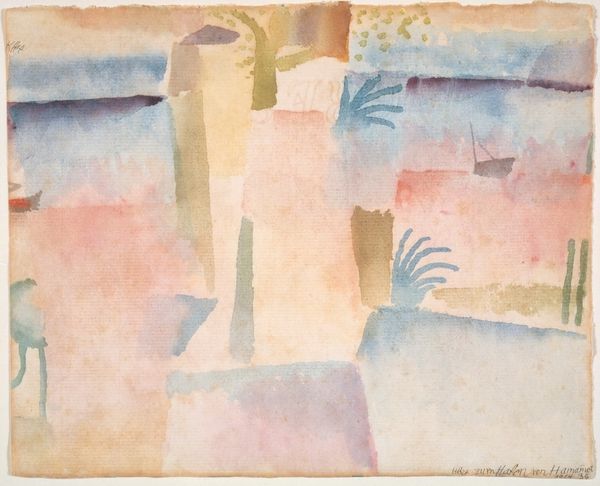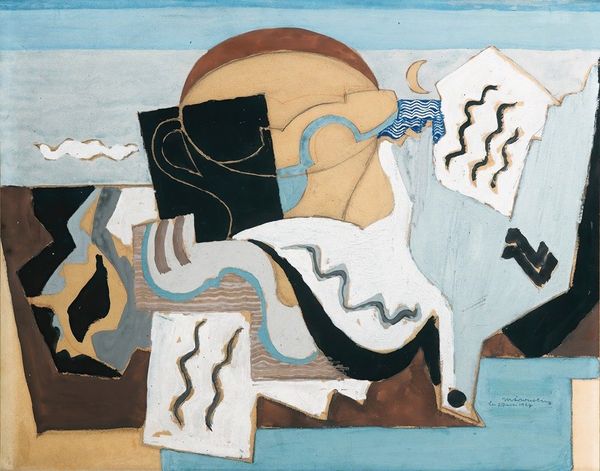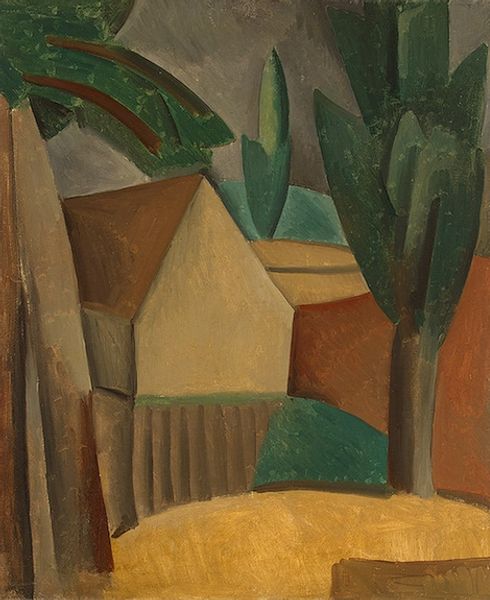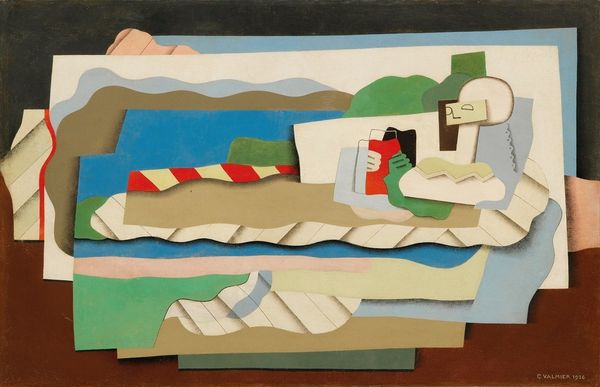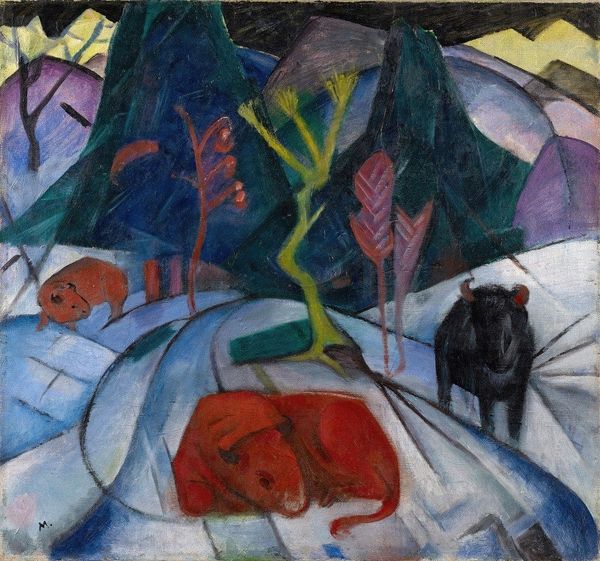
Dimensions: support: 495 x 610 mm frame: 682 x 795 x 60 mm
Copyright: © John Craxton | CC-BY-NC-ND 4.0 DEED, Photo: Tate
Curator: John Craxton painted "Hotel by the Sea", and it's now held in the Tate Collection. The painting presents a geometric landscape with a building looming above the coast. Editor: It's quite striking, isn't it? Almost dreamlike with its fractured forms and subdued palette. There's a sense of isolation in the scene; a stark contrast between the man-made structure and the natural world. Curator: Indeed, the fractured planes call to mind Cubism, yet the symbolism feels deeply personal. Look at the goat, a recurring motif in Craxton's work, often associated with freedom and pastoral life. It's a rejection of the city. Editor: I see a tension between the utopian ideal of the hotel and the reality of the landscape; perhaps a commentary on the impacts of tourism or development on the natural environment and local communities. Curator: Or maybe, through the distorted perspective and symbolic figures, Craxton offers a glimpse into an inner world, reflecting on the human condition within a broader landscape of history and culture. Editor: Either way, it prompts us to question our relationship with the environment and the spaces we create within it. A silent call for stewardship, perhaps.
Comments
tate 6 months ago
⋮
http://www.tate.org.uk/art/artworks/craxton-hotel-by-the-sea-t00117
Join the conversation
Join millions of artists and users on Artera today and experience the ultimate creative platform.
tate 6 months ago
⋮
Craxton was born in London and studied at the Central School of Art and Goldsmiths’ College. Craxton visited Greece for the first time in the summer of 1946. This is one of his earliest Greek landscapes, painted on the island of Poros. Craxton’s experience of Greece made him realise that his interest in landscape was based on how humans interacted with it. Figures such as shepherds and poets, as well as farms, houses and animals, feature regularly in these paintings. Gallery label, April 2019

